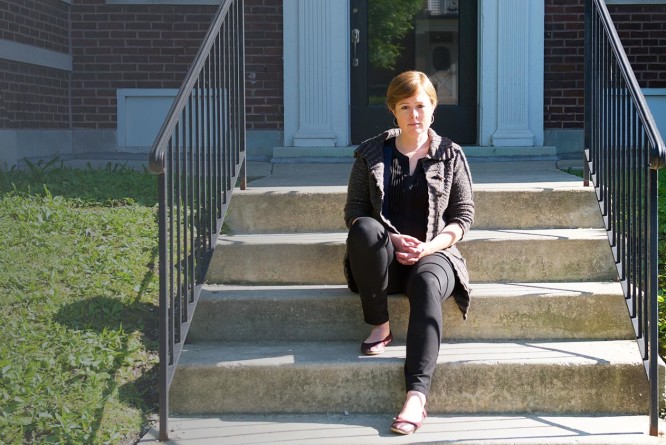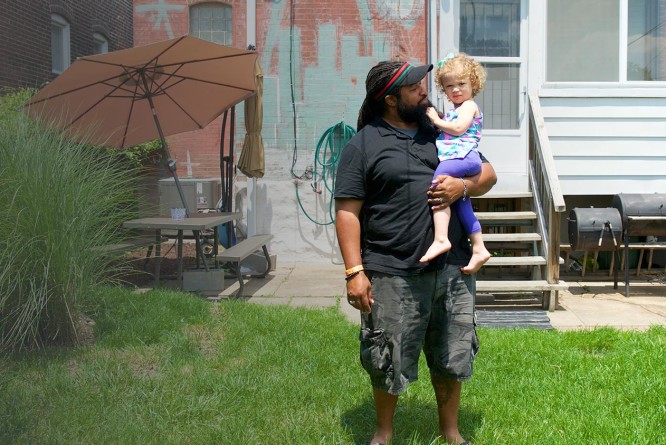Optimizing Existing Housing Support
The expert testimony, research, scholarship, and lived experience collected by the Commission revealed the following:
- The nation is facing a housing crisis (Desmond, 2015). The number of market-rate housing units affordable for lower-income families has decreased substantially (Poethig et al., 2015). In 2013, St. Louis City had 21 market-rate units available per 100 extremely-low income (ELI) families (i.e., those earning less than 30 percent of the area median income) (Poethig et al., 2015).
- Recent research suggests that the lack of stable housing is a primary driver of high healthcare costs and poorer health outcomes for lower-income people (Taylor et al., 2015). When provided housing support, lower-income, high-need individuals use fewer healthcare resources, leading to substantial net savings (Taylor et al., 2015).
- Underutilization of land is a problem. Currently, under the direction of the Land Reutilization Authority — the nation’s first land bank, the City of St. Louis administers over 10,000 vacant units available, with nearly 11,000 additional vacant or abandoned parcels remaining within the city limits (Phillips, 2015).
- According to a study comparing 2009 and 2011 census data, approximately 43 percent of renters in St. Louis are carrying an unaffordable cost burden defined by the United States Department of Housing and Urban Development (HUD) as spending over 35 percent of household income on housing. Qualification for affordable housing as roughly less than one-third of a family’s income (Flanagan & Schwartz, 2013).
- According to a 2012 St. Louis County Housing Study focused on the North County and Lemay areas, a number of factors have necessitated additional housing support (Development Strategies, 2012). Since 2005 in North County alone, approximately 13 of every 100 homes experienced foreclosure. In addition, vacancy in the same area is double that of surrounding regions at over 10 percent of the housing stock (Development Strategies, 2012).
- A network of housing supports is designed to serve low-income families including:
- Section 8 Housing Choice Vouchers:“The Section 8 voucher program is the largest housing subsidy for low-income Americans. Section 8 is federally funded and administered by HUD, but managed by local housing authorities. Within the St. Louis metropolitan area, eight different housing authorities operate Section 8 programs.” (Metzger, 2014).
- The national Low-Income Housing Tax Credits (LIHTC) program is the nation’s largest rental housing production program (Freedman & McGavock, 2015). “It operates by providing a subsidy to rental housing developers in return for a commitment to charge below-market rent levels. Rents for these units must be set at levels that are deemed affordable for households with moderately-low income levels for the local area, and the units are set aside for residents at or below this income ceiling” (Turner & Kingsley, 2008).
- Housing Trust Funds:Both St. Louis City and County operate housing trust funds with the mission of awarding grants and loans to developers, neighborhood organizations, and nonprofits in order to increase access to affordable housing for low-income individuals and families (Affordable Housing Commission, 2014).
- Community Development Block Grants (CDBGs):CDBGs are awarded by HUD in support of a wide range of community development needs including neighborhood stabilization and affordable housing development (Department of Housing and Urban Development).
- Families who are better housed in more-resourced neighborhoods enjoy the kinds of opportunities for themselves and their children that may induce broader social and economic inclusion and growth for a community (Chetty et al., 2015). HUD designed and implemented the Moving to Opportunity (MTO) demonstration study to assess the effects of providing housing vouchers to help low-income families move from severely distressed, high-poverty housing projects to low-poverty neighborhoods. This policy change is a recognition of the ineffectiveness of current housing policy in addressing concentrations of poverty. The MTO Final Evaluation found significant gains in health, work, and education among those families that spent the greatest amount of time in high-opportunity neighborhoods (Sanbonmatsu et al, 2011). In light of these and other findings, housing support systems are increasingly pushing towards measures that distribute low-income housing across communities as opposed to allowing high concentrations in impoverished neighborhoods.
- Studies suggest that housing discrimination can result in housing-choice voucher recipients being denied access by landlords who want to keep low-income families away (Austin Tenants’ Council, 2012). Housing support recipients often have little choice and end up in high-poverty areas with underperforming schools and high crime rates (Austin Tenants’ Council, 2012).
These findings prompted the Commission to draft several recommendations that aim to improve housing support and affordability for low-income households.
To that end, the Commission issues the following calls to action:
Take Action
Support increased access to care
Contact your local state legislator to express your support for Medicaid expansion. Join local or state advocacy organizations to get involved.
Invest in a child’s future
Make a financial investment in a child’s savings account.
Suggested Reading List
Semuels, A. (2015, June 24). How housing policy is failing America’s poor. The Atlantic. Retrieved from https://www.theatlantic.com/business/archive/2015/06/section-8-is-failing/396650/
Citations
- Austin Tenants’ Council. (2012). Voucher holders need not apply:An audit report on the refusal of housing choice vouchers by landlords in the Austin MSA. Retrieved from:https://www.austintexas.gov/edims/document.cfm?id=211114
- Baum-Snow and Marion. (2008). Effects of low income housing tax credit developments on neighborhoods. Brown University. Retrieved from:https://www.econ.brown.edu/fac/nathaniel_baum-snow/lihtc-dec08.pdf
- Berube, A., Frey, W. H., Friedhoff, A., Garr, E., Istrate, E., Kneebone, E.,… Wilson, J. H. (2010). State of metropolitan America:On the front lines of demographic transformation. Washington, DC:Metropolitan Policy Program at The Brookings Institute. Retrieved from https://www.brookings.edu/~/media/Research/Files/Reports/2010/5/09%20metro%20america/metro_america_report.pdf
- Bogan, J. (2015, April 18). Housing authority wants smaller low-income complexes in more affluent areas. Louis Post-Dispatch. Retrieved from https://www.stltoday.com/news/local/metro/housing-authority-wants-smaller-low-income-complexes-in-more-affluent/article_51d5ab2b-cd42-5aca-b7f4-be5455f9a7b3.html
- Center for Community Progress. (2014). Take it to the bank:How land banks are strengthening America’s neighborhoods. Retrieved from:https://www.communityprogress.net/filebin/Center_for_Community_Progress_-_Take_it_to_the_Bank_-_2014_-_Updated_Online_Version.pdf
- Center for Housing Policy. (2014). Inclusionary upzoning:Tying growth to affordability. Retrieved from:https://www.nhc.org/Inclusionary-Upzoning.pdf
- Corporation for Enterprise Development. (2015). Assets & opportunity scorecard:Protection from discrimination for low-income renters. Retrieved from https://scorecard.assetsandopportunity.org/latest/measure/protection-from-discrimination-for-low-income-renters
- Department of Housing and Urban Development. COmmunity Development Block Grant Program. Retrieved from:https://portal.hud.gov/hudportal/HUD?src=/program_offices/comm_planning/communitydevelopment/programs
- Desmond, M. (2015, March). Unaffordable America:Poverty, housing, and eviction [Fast Focus No. 22-2015]. Madison, WI:Institute for Research on Poverty, University of Wisconsin. Retrieved from https://www.irp.wisc.edu/publications/fastfocus/pdfs/FF22-2015.pdf
- Freedman, M., & McGavock, T. (2015). Low-income housing development, poverty concentration, and neighborhood inequality. Journal of Policy Analysis and Management, DOI:10.1002/pam.21856
- Galvez, M.M. (2010). What do we know about housing choice voucher program location outcomes. A review of recent literature. What Works Collaborative. Retrieved from:https://www.urban.org/sites/default/files/alfresco/publication-pdfs/412218-What-Do-We-Know-About-Housing-Choice-Voucher-Program-Location-Outcomes-.PDF
- Katz, LF., Liebman, JB., & Kling, JR. (2001). Moving to opportunity in Boston:Early results of a randomized mobility experiment. Quarterly Journal of Economics, 116 (2):607–54.
- Metzger, M. (2014). Section 8 in the St. Louis Region:Local opportunities to expand housing choice. Center for Social Development, Washington University. Retrieved from:https://csd.wustl.edu/Publications/Documents/PB14-29.pdf Poethig, E. et al. (2015). Mapping America’s Rental Housing Crisis. Urban Institute. Retrieved from:https://datatools.urban.org/features/rental-housing-crisis-map/
- Sanbonmatsu, L. et al (2011). Impacts of the Moving to Opportunity for Fair Housing Demonstration Program after 10 to 15 Years. Washington, DC:U.S. Department of Housing and Urban Development, Office of Policy Development and Research.
- Taylor, L. A., Coyle, C. E., Ndumele, C., Rogan, E., Canavan, M., Curry, L., & Bradley, E. H. (2015, June). Leveraging the social determinants of health:What works? Boston, MA:Blue Cross Blue Shield of Massachusetts Foundation. Retrieved from https://www.bluecrossfoundation.org/sites/default/files/download/publication/Social_Equity_Report_Final.pdf.
- Turner, M. & Kingsley, G. (2008). Federal programs for addressing low-income housing needs:A policy primer. Urban Institute. Retrieved from:https://www.urban.org/research/publication/federal-programs-addressing-low-income-housing-needs/view/full_report
- S. Department of Housing and Urban Development. (2002). The impact of CDBG spending on urban neighborhoods. Retrieved from:https://www.huduser.org/portal//Publications/PDF/CDBGSpending.pdf
- Development Strategies. (2012). The St. Louis County Housing Study. The St. Louis County Department of Community Planning, East West Gateway Council of Governments. Retrieved from:https://www.onestl.org/resources/reports/housing/91-st-louis-county-housing-study .
- Phillips, C. (2015). Louis officials discuss best practices for reducing vacancy and blighted buildings. St. Louis Public Radio. Retrieved from:https://news.stlpublicradio.org/post/st-louis-officials-discuss-best-practices-reducing-vacancy-and-blighted-buildings#stream/0.
- US Census. (2015). St. Louis (city), Missouri. US Department of Commerce. Retrieved from:https://quickfacts.census.gov/qfd/states/29/2965000.html
- WFN Consulting. (2014). Analysis of impediments to fair housing choice. St. Louis County and the cities of West Florissant and O’Fallon. Retrived from:https://www.stlouisco.com/Portals/8/docs/document%20library/planning/housing/St%20Louis%20Co%20AI%20FINAL%2012-2014.pdf.



#FwdThruFerguson